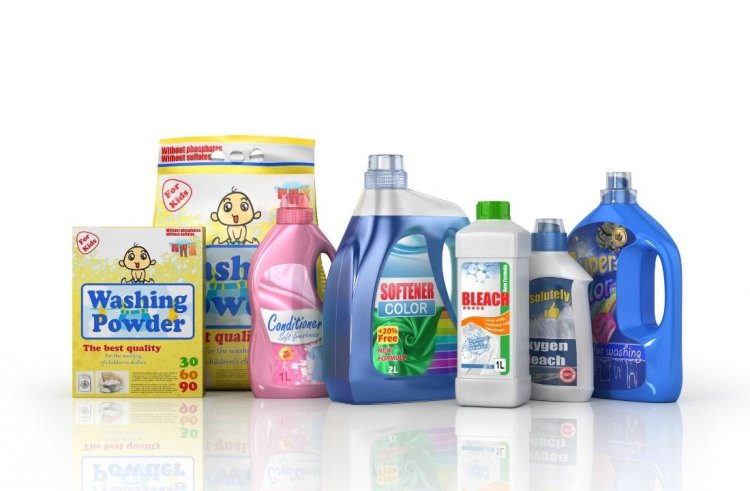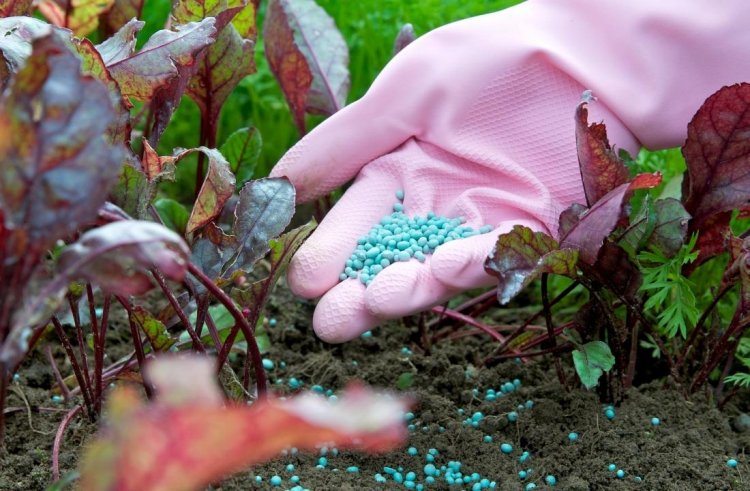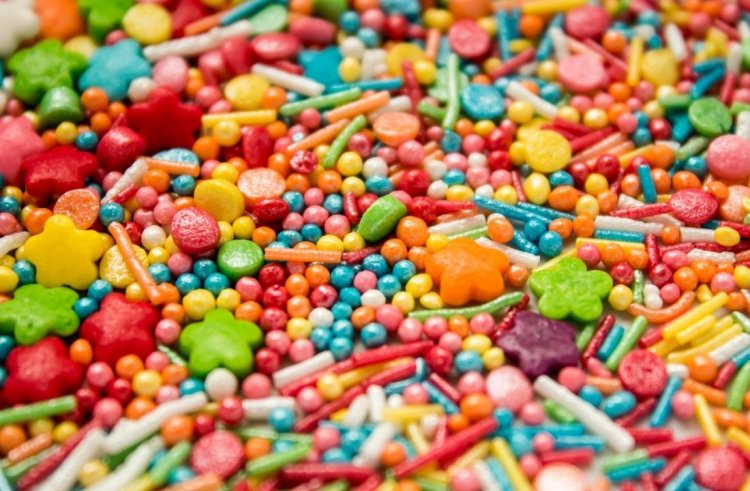Believe it or not!! We live in a world of petrochemicals
Believe it or not!! We live in a world of petrochemicals
Updated on August 23, 2022 12:13 PM by Ava Sara
As kids in our lower grades, we would have certainly studied what black gold is. If not, you can check your chemistry books on what it is. Black gold refers to petrol because as crude oil is extracted deep from the Earth, it is black. Hence got its name. But why might gold be your next question? Named so because of its value in the global market.
Next to water, crude oil is considered the second most abandoned liquid on Earth. According to the archaeological record, this crude oil was first found on the banks of the Euphrates river and is the site of oil seep known locally as The Fountains Of Pitch, present-day Iraq. Some 6000 years ago, the byproduct asphalt was used as a waterproofing agent for baths, pottery, and boats.
Add Block
The usage of asphalt is recorded by the Mesopotamia civilization in 4000 B.C., which was used in ships, jewels, and mosaics and as an adhesive to set weapon handles. Egyptians used it for embalming, and even pyramids were held together by this adhesive.
Moreover, the usage of bitumen was also mentioned in the bible, which was used as a coating for Moses' basket and Noah's Ark. Some 2000 years ago, the Chinese used oil and natural gas for heat and light.
Bamboo pipes were used to carry it to their home, and even 10th-century Sumatrans and pre-Columbian Indians believed that crude oil carried some medicinal benefits. Marco Polo even used this crude oil to treat mange in camels. In 1539, crude oil was exported from Venezuela for Roman Emperor Charles V to treat his gout problem.
Add Block
American Indians found crude oil contaminated in the water bodies; they found a technique and collected the oil to light lamps, which was also used for medical reasons.
Add Block
First-ever product bitumen formation

When it oozes to the surface, crude oil evaporates and leaves bitumen behind; this component was used as an adhesive and the first-ever use of black gold as per old history records.
When crude oil became a prominent usage
Until the 19th century, people just ignored the presence of this black gold. Only the colonist who settled in America dug well to find water; instead, they found oil.
Later, Kerosene, a product derived from crude oil, was founded; kerosene lamps became popular, initiating the first-ever large-scale demand for petroleum; previously, coal oil was used to light lamps.
Samuel Martin Kier first founded the American refinery in Pittsburgh and was the only man responsible in the United States for refining crude oil into Kerosene for lighting lamps. Along with this, he also marketed a new lamp by replacing the whale oil (obtained from the whale) with Kerosene.
Add Block
Another byproduct of paraffin
As paraffin from crude oil was being refined in the 19th century, it was James Young, the Scottish Chemist.
He found a seepage of natural petroleum in the Riddings colliery at Alfreton Derbyshire, which was used as lamp oil, and obtained a thicker oil suitable for lubricating machinery. Later he found that heat on the coal seam produced petrol, so he started to produce petrol artificially and later got the name "Paraffin young."
Add Block
World’s first oil refinery
In 1850, James Young partnered with Meldrum and Edward William Binney under the company name, which produced the world's first commercial oil works and refinery.
The oil for the refinery was extracted from locally mined torbanite, shale, and bituminous coal to manufacture naphtha and lubricating oils; paraffin for fuel use and solid paraffin were not sold till 1856.
Only in 1859, the American Businessman Edwin Drake successfully drilled the first ever well through the solid rock and found crude oil; this act led to the birth of the modern petroleum industry and was named "Drake's Folly."
After 1900, an internal combustion engine came to automobiles that boomed the need for crude oil in the United States, Russia, and the Middle East. Later, this invention replaced warships and locomotive train engines with diesel over coal, which was a major factor in World War II.
Also Read: Petrochemical market confusion set to continue as China deflation approaches
Crude oil today is not only converted into petroleum products, as 65-75% of the oil is processed into fuel. In contrast, the remaining is processed into various products we use in our everyday basics. And the common products that we know are
- Wax- used to make candles and polishes.
- Vaseline – is used for minor cuts, burns, and other skin ailments.
- Paraffin- fuel for jet engines, rockets, and diesel and tractor engines.
- Plastic - is used for various purposes like construction, packaging, etc.
- Bitumen - road construction, waterproofing, and other uses.
- Polyester - is used in clothing fabrics.
- Liquified Petroleum Gas- used as a fuel for domestic gas.
Add Block
What are petrochemicals
The chemicals derived from chemical compounds from oil and natural gas are one of the components of many products that we use in our daily lives. Here is the list of products we use derivatives for petrochemicals in our daily life.
Also Read: What Fuels Are Made from Crude Oil?
Add Block
Tooth Paste and mouthwashes

We start the day by brushing our teeth with toothpaste and not many are aware of the ingredient in it. Though it is stated that toothpaste is used to reduce cavities, certain chemicals harm, and using synthetic colors and sweeteners in toothpaste can harm dental health. The coloring agents added in toothpaste are also a product of petrochemical that harms your body. The same Blue No1 is also used in mouthwashes to make it appear like a mint flavor.
Soap and detergents

Next to brushing, we head to the shower by tossing our used clothes in the washing machine. Modern soap and detergents are made from an array of petrochemicals and oleochemicals (derived from a combination of fats and oil) and with other extra ingredients added to it like fragrances, enzymes, and agents, which can be found in solid, liquid, and powder form.
Also Read: How Animal Fat Is Used in Soap and Skin Cleansers
Add Block
Fashion industry dependent on petrol

After nice fresh bathing, everyone loves to drape on a nice crispy dress and it is reported that 60 percent of textile fibers are derivatives from petrochemicals that are non-biodegradable. It is not just the fabric that is a major cause of pollution, but the process of making the material releases greenhouse gas and other waste products. With the change in fashion and other textile products, the percentage tends to increase; for many, it is allergic.
Add Block
The breakfast part of petrol

This might sound strange for many, but that’s the truth; the breakfast that we eat is rich in petrochemicals, but how? What did you have for breakfast? Bread, oats, cereals, milk, pancake, and some form of petrochemical derivatives are used there. It may be hard to believe, but that’s the truth.
Also Read: 5 Breakfast Habits That Will Slow Your Metabolism
Take milk, for example; milk comes in cartons or tetra packs boxes or milk-pet bottles, and where do you think these products are made from, again, the same petrochemical derivatives?
Petroleum products in packaging

The booming Food Processing industry uses many petrochemical products, from preserving processed food to packaging and delivering it. And for all these products, these petrochemicals are used.
Consumers around the world find it easy to carry products like plastics making their shopping customized which is easy to store, consume, and even transport. Packaging products like drinks, chips, and other items are free from getting contaminated and improves the product's shelf-life.
With comfort in transporting the food, it reduces transportation costs and any reported damages. This also has reduced energy usage as this packed food does not need refrigeration and can be easily distributed.
Packaging like Tetra packs for milk and juices, Blister Pack for chocolates and puddings, Pouch packs for chips, and biscuits and plastic packs for bread, fruits, etc., made everything simple.
Add Block
Petrochemical fertilizers

Almost all food in the soil is grown using fertilizers, and they are not made in natural ways but by synthetic fertilizers that are artificial inorganic compounds produced by fusing large quantities of petroleum and other fossil fuels.
These fertilizers are preferred widely due to this reduced cost compared to other fertilizers. Moreover, these are formulated for direct absorption directly by the plant. This yields good production and can feed the increasing global population.
Now think by what means the wheat is cultivated using? The same synthetic Petrochemical fertilizers. The additives used in making bread, like emulsifiers, and preservatives, are also derived from petrochemicals.
Add Block
Petrochemicals in cosmetics

Women would always love to indulge in grooming right from lipstick, foundation, eye shadow, and perfume. Where do all these come from? Again petrochemicals. The main ingredients used in cosmetics such as paraffin wax, mineral oil, Toluene, Benzene, Butanol, EDTA, etc...
Toluene is an ingredient used in nail products and hair dyes. It can dissolve substances like resins and plasticizers. For example, toluene used in nail polishes enables smooth coating on the nail as it spreads evenly and gives a smooth look.
This chemical is not only limited to the cosmetic industry but is also used in making plastics, resins, nylons, and synthetic fibers. It is also used to make some lubricants, rubbers, dyes, and even detergents.
Topical creams

The first ever petrol-based medicine was Vaseline; though today, the medical properties have been widely neglected still today used to treat skin chapping, treat rashes, and alleviate nosebleeds. According to the U.S. Food and Drug Administration, this petroleum jelly is considered an over-the-counter skin protectant.
Other topical medicines that treat psoriasis are also made from petrochemicals. Scales on the skin can be rid of by using salicylic acid on the affected area as it comes not only in the form of creams but also in lotion, ointments, and other forms.
In 1966 a researcher named Kerr-McGee prepared salicylic acid via the microbial degradation of naphthalene, which is another derivative while refining the crude oil, which is now commercially biosynthesized from phenylalanine.
Similar to psoriasis, other numerous skin problems like fungus to eczema can also be reduced based on petrochemistry as these skin issues can be treated.
Add Block
Polyethylene glycol in skincare products

This polyethylene glycol is used both in cosmetics and skincare products, even in products like baby wipes. The purpose of using this chemical is that it works as a thickener, softener, an agent that carries moisture that penetrates easily inside the dermis layer. This will be presented in the ingredient used as PEG with some number mentioned in it.
Also Read: The Skincare Line of Kim Kardashian is criticized by Bethenny Frankel
Add Block
EDTA in skin and hair care

A common ingredient almost in all cosmetics is EDTA. This is found in various products like moisturizers, cleansers, bath soaps, shampoos, conditioners, hair dyes, bleaches, and many others products. This ingredient prevents any cosmetic item from turning rancid, retains the fragrance, and keeps the product in good condition until the expiry.
Also Read: Kris Jenner's nine-step skincare routine has been scrapped
Butanol to retain the fragrance used in products

This byproduct of petroleum Butanol is added to cosmetics to retain its fragrance.
This is found in products like eye makeup, fragrance, cologne, and shaving preparations. While checking on the ingredient list, you cannot find the name Butanol as such; instead, you will find different names that include butyl alcohol, butylparaben, and butylene glycol.
Add Block
How to choose cosmetics free from petrochemicals
Almost all of today's products are filled with petrochemicals, and average users like us are unaware of what is safe and what is not, but still, a few simple practices can save our life from harmful petrochemicals.
Add Block
When buying skin care products, check the product's ingredients list, as this can help you distinguish between harmful and harmless.
The best example is choosing any moisturizer cream, lotion, or get-go for ingredients rich in botanical oils like rosemary, almonds, or oils derived from fruits and vegetables, and herbs as natural based would be good.
Prefer lotions with coconut oil or shea butter as this will make your skin look subtle on using it as lotion. Choose beauty products rich in probiotics that balance your skin ph. Of all, choose beauty products with fewer ingredients from a reputed brand so you can use petrochemicals-free products.
Add Block
Petrochemicals used in aspirins

Are you suffering from any sickness or pain? Again comes the usage of petrochemicals. The most widely used drug, aspirin, was first synthesized by German chemistry Felix Hoffman and is today's savior to the modern world.
This opened new gateways to whole new drug chemistry. Chemicals like Cumene, phenol, Benzene, and others are used to make aspirin. This led to the synthesis of penicillin and cancer-fighting drugs.
Add Block
Today, many drugs are synthesized using the petrochemical polymer responsible for making capsules and coatings.
Especially Time-release drugs that administer by dissolving the right amount of doses slowly using tartaric acid-based polymer. Packaging the drugs using plastics keeps medication sterile, safe from kids, and even breakage free from accidents.
How are pharmaceutical drugs mass produced
Several pharmaceutical drugs are mass-produced by chemical reactions that involve the usage of organic molecules, as Petroleum has a wide source of organic molecules that feed into the drug synthesis process.
And it is said that as much as 99% of pharmaceutical feedstocks and reagents as coming from the derivatives of petrochemical sources.
Natural sources of drugs are often purified using petrochemicals, resulting in a more efficient and less costly production process. Other drugs like antibiotics derived from natural fungi and microbes like penicillin often use phenol and cumene as preparatory agents that are also derivatives of petrochemicals.
Without the byproducts of petrol, it is hard to mass produce pharmaceutical drugs, particularly at the scale needed to meet global demand.
Add Block
Chewing gum

Chewing gum is a widely consumed product to reduce the cheek muscles. Do you know what it is made of? Petroleum wax. Initially, tree sap-based gums were used to make chewing gums, which were later replaced by petroleum-derived paraffin wax. These chewing gum manufacturers added sweeteners to their paraffin gums to increase their sweetness. These gums tasted sweet but were not chewy enough. So they moved back to their tree sap. But even still, many gum manufacturers prefer paraffin wax. The same wax is also used in making lipstick and scented candles.
Add Block
Mineral oil in candies

Residues of mineral oil are found in candies like gummy candies, Swedish fish, and others as it helps the candies from sticking on with one another and is also used to give a clean, smooth texture to those candies which are usually given as an outer coating.
Workstation components

Derivatives of petrochemicals are also used in workplace stations, like computer system components, as these are made up of plastics. And this is used to protect computer parts against heat. Also used in polymer capacitors to conduct electricity, and the complete electronic circuit is created by this plastic.
Add Block
Other electrical goods components

From telephones to Broadband Hubs, televisions, radios, and vacuum cleaners, petroleum-derived plastics are used to create a huge range of electrical goods.
Add Block
Rugs used in furniture

Those days rugs were made using natural fibers, and these days, rugs are made using synthetic fibers; just like clothing material, these are cheap and readily available in the market, so it is predominantly used everywhere.
Running shoes

Like single-use plastics, the foams of many sneakers are made of single-use plastics, which are also produced from petrochemicals derived from fossil fuels.
Also Read: Amazon Dupes for Jennifer Garner's Veja Shoes
Add Block
Add Block
Coming to the sneaker industry, in the late 1970s, the industry underwent a major change as the petrochemical Ethylene was commonly used at that time. The difference between PET and EVA is other chemicals with which Ethylene is combined, including processes.
But today, this is a problem
Every year, various brands produce billions of pairs. Like any other plastics, fossil fuel foams are an important part of the world’s growing plastic problem. The pressing and processing of fossil fuels greatly impact the climate that moves towards global warming.
Many petrochemicals used in cosmetics can lead to skin irritation and rashes, and continuous usage is carcinogenic and can cause cancer when exposed for a longer time. The chemicals used in perfume can trigger asthma and other breathing troubles.
Not only cosmetics but also baby products like baby oil, shampoo, and baby wipes are rich in petrochemical derivatives like mineral oil, parabens, and EDTA. Imagine small infants being exposed to these byproducts, making them hazardous to health and dangerous.
This 21st century’s modern world is built mainly through the derivatives of petrochemicals, which made the economy flourish using plastic.
The products mentioned alone are just a percentage of what we use daily, but the real usage is beyond everything, as anything that we use today is enriched with petrochemicals. Though many countries are curbing their best to stop using these, it all depends on the people who handle them and those who use them.
According to the Centre for International Environmental Law
“if plastic production and use grow as currently planned, by 2030, emissions could reach 1.34 gigatons per year—equivalent to the emissions released by more than 295 new 500-megawatt coal-fired power plants.”
The report also reveals that the Ethylene produced in a single year is quite equivalent to 45 million cars driven in a year. And that’s just Ethylene, one of the many fossil-fuel-based components of plastics used around the world.





